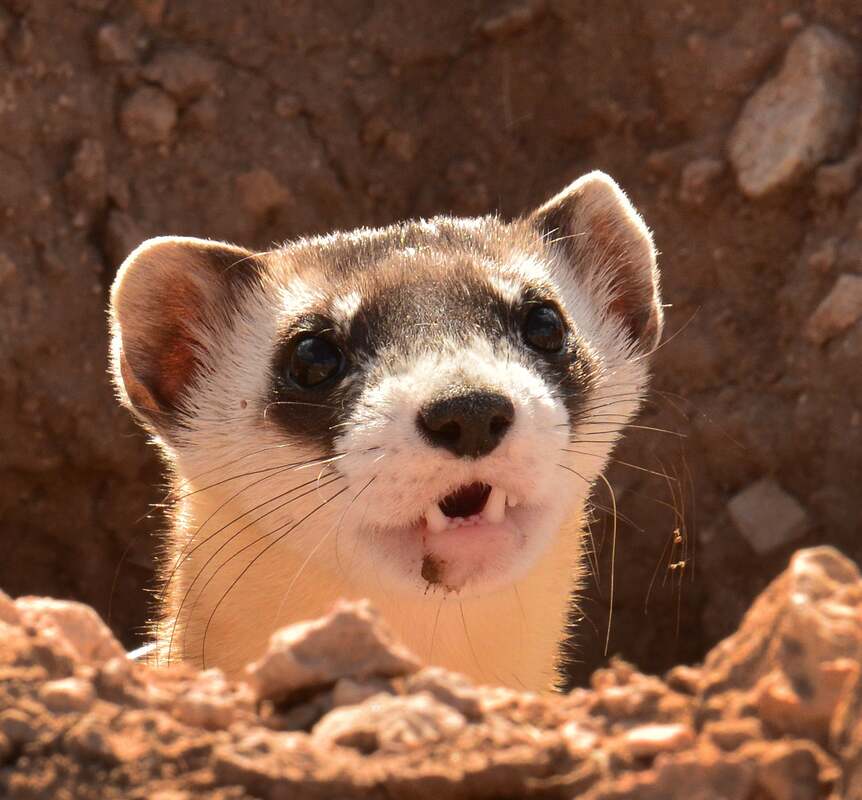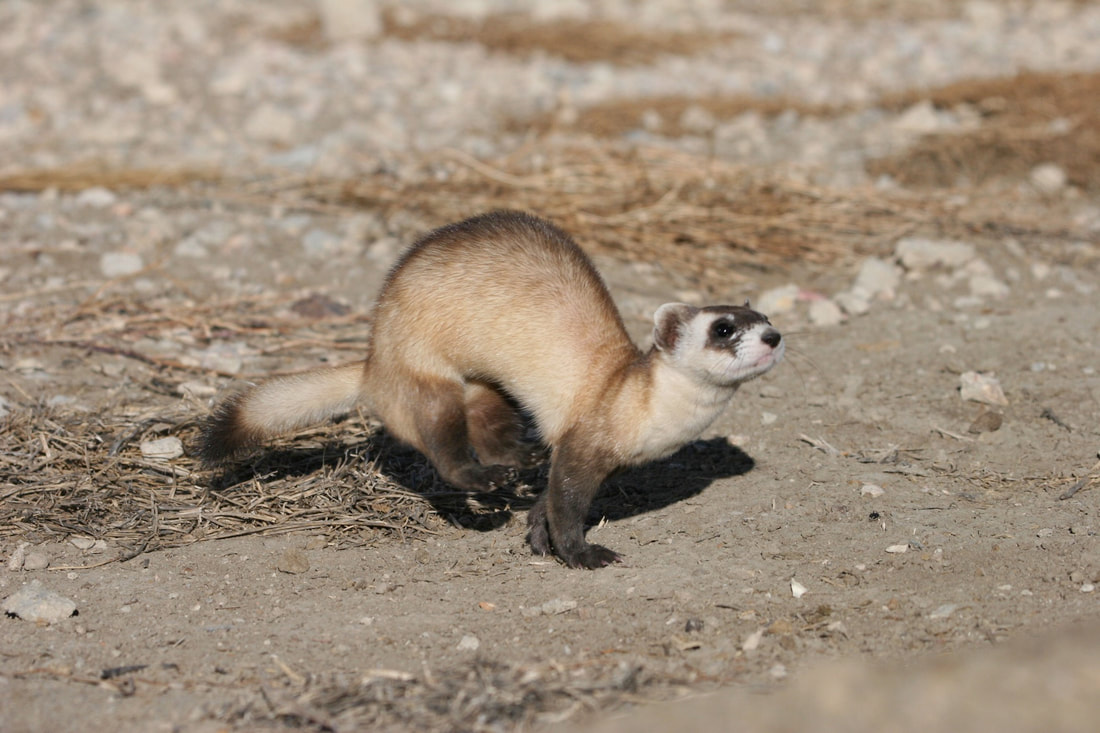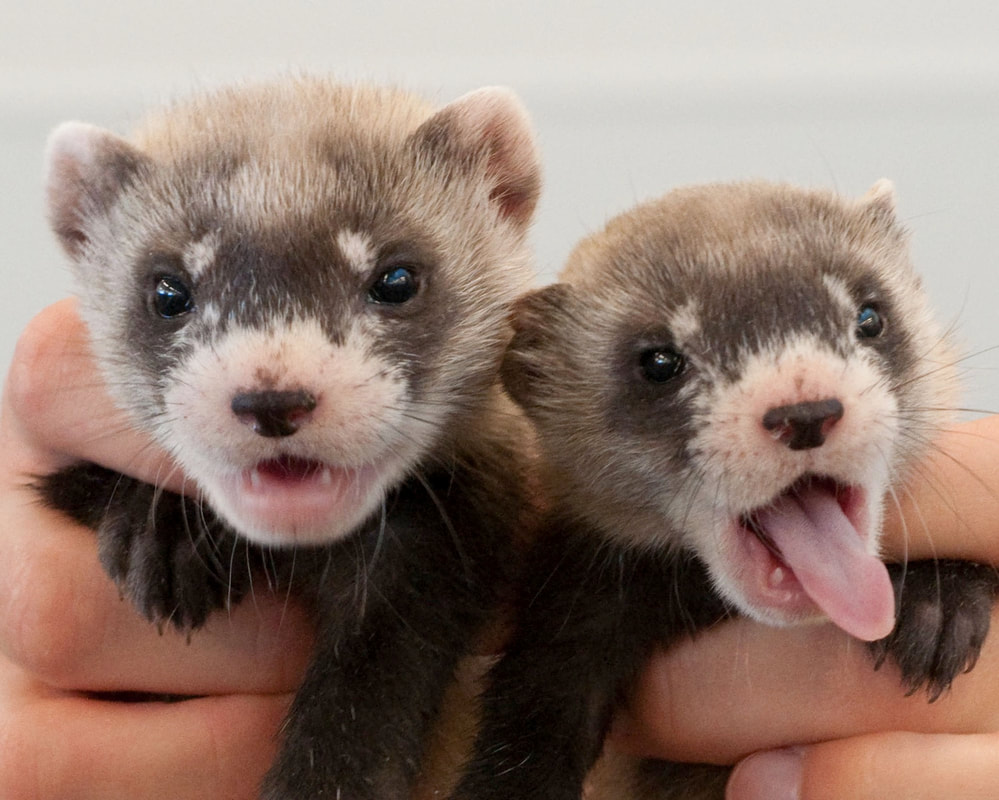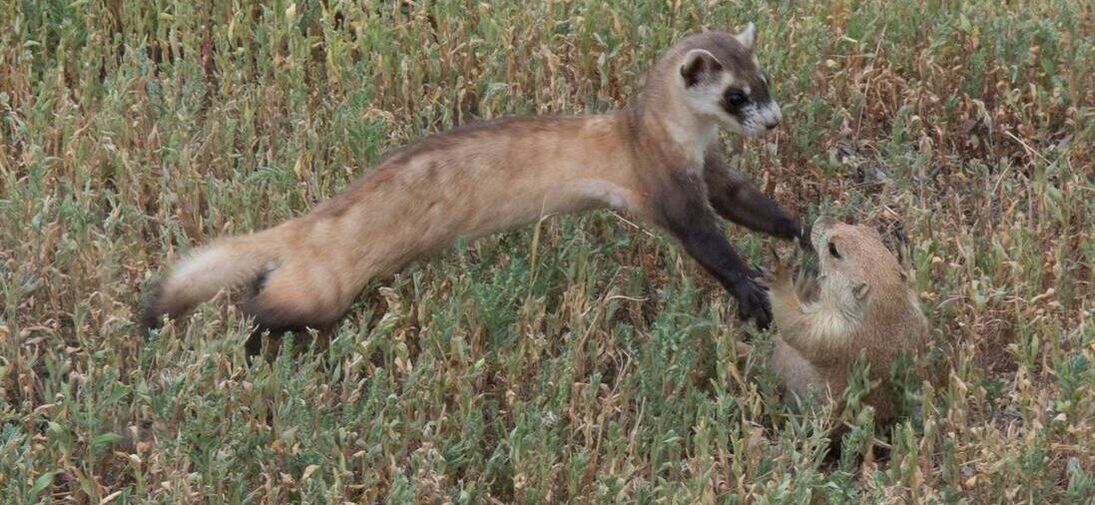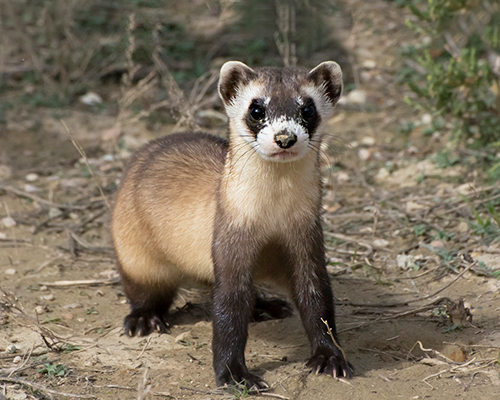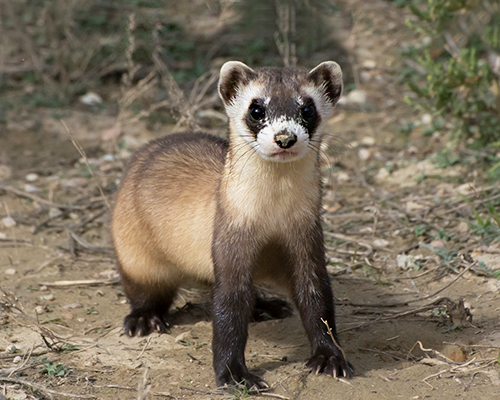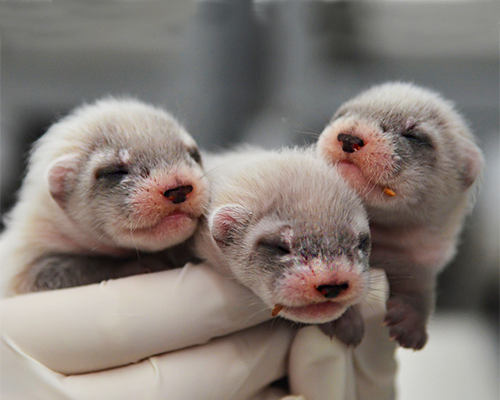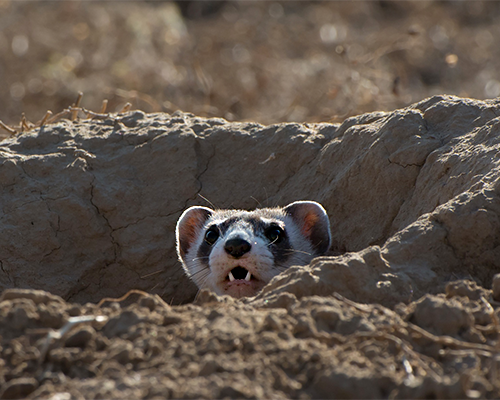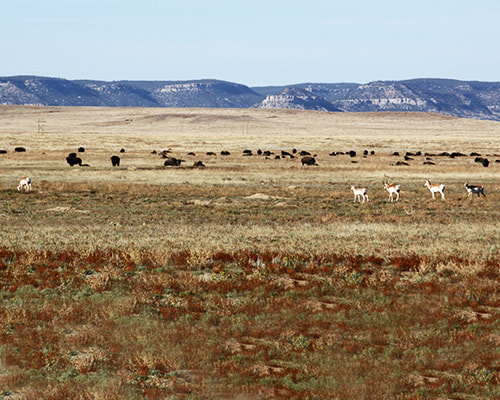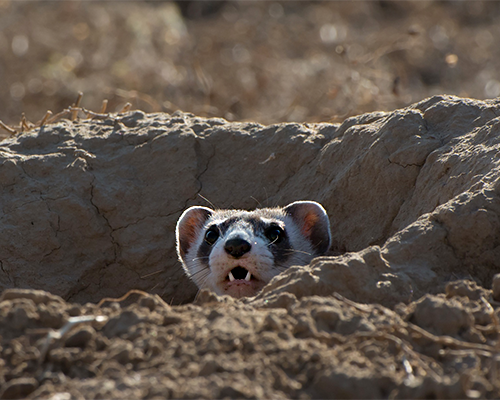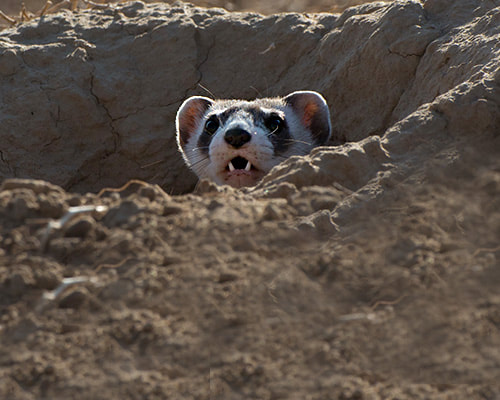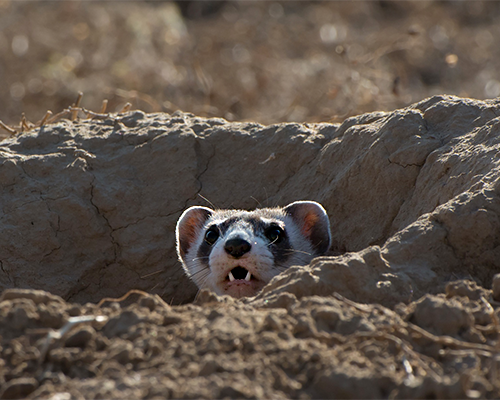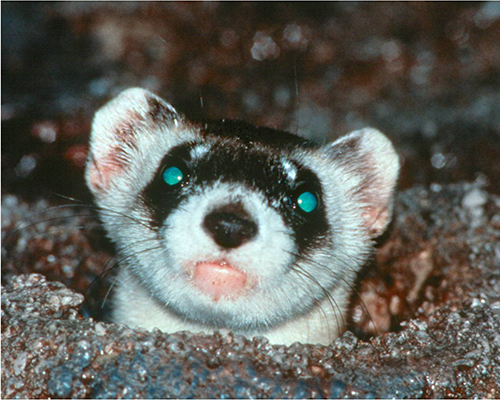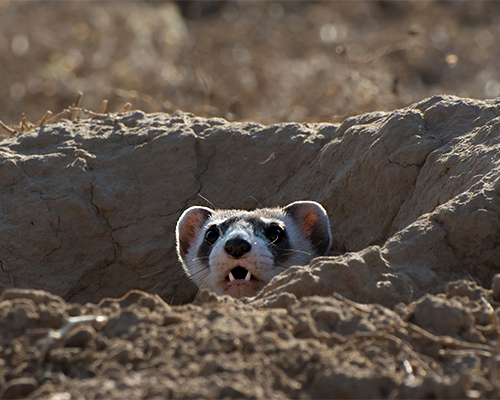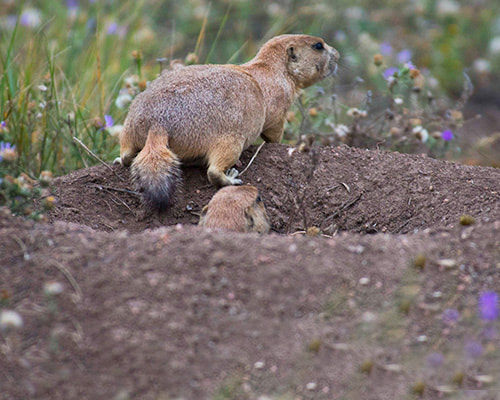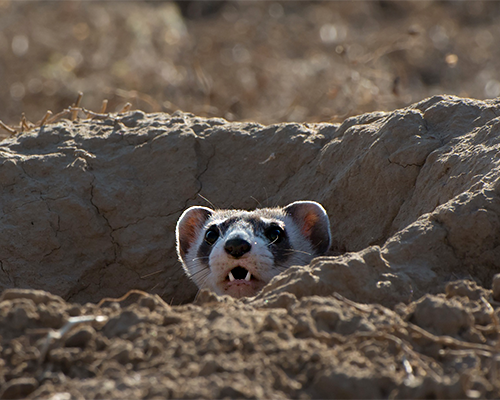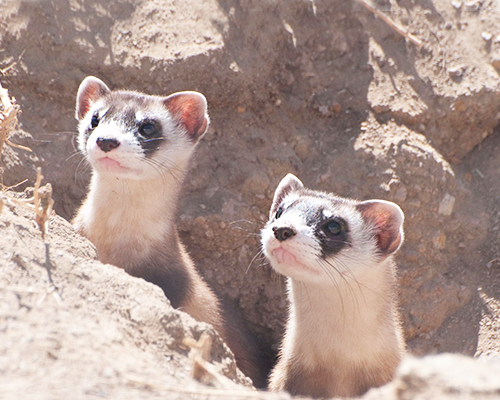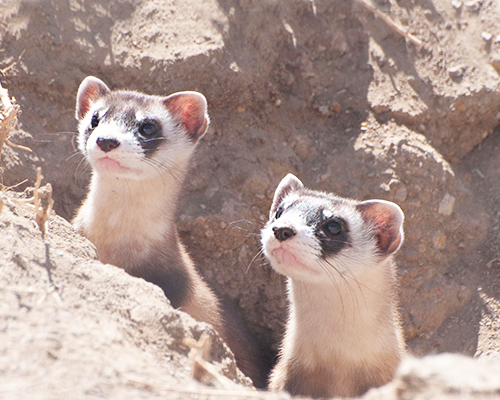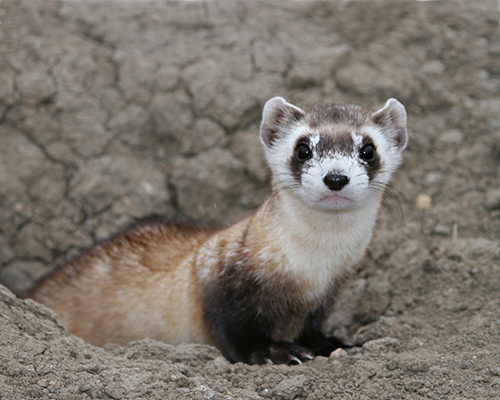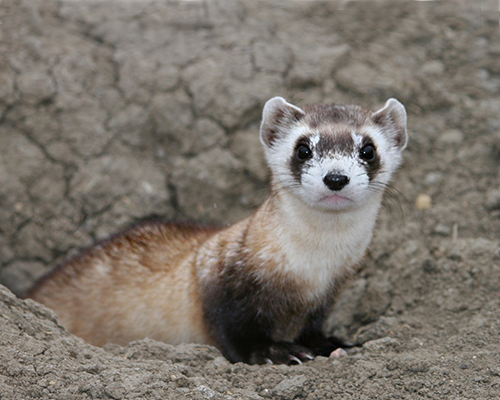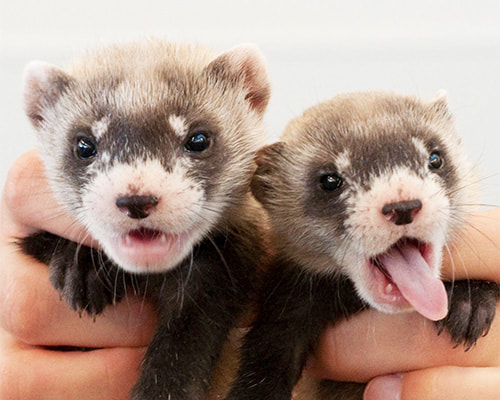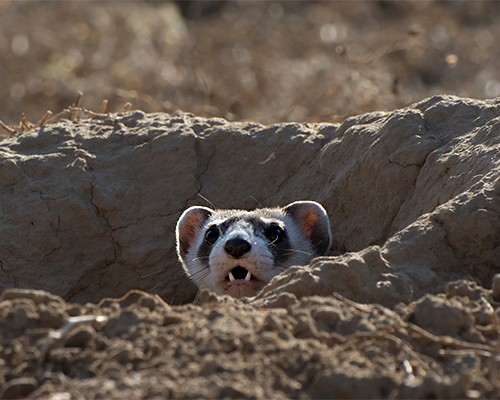SPECIES PROFILE
The Black-Footed Ferret (scientific name: Mustela nigripes)
Ferrets evolved in Europe between 3 and 4 million years ago from weasel-like ancestors. There are only three ferret species on Earth; the European polecat, the Siberian polecat, and the black-footed ferret. The black-footed ferret is the only ferret species native to North America. They dispersed from Siberia into North America across the Bering Land Bridge. Over thousands of years of co-evolution with prairie dogs, their behavior and biology gradually changed to suit their environment. Scientists speculate that the species has probably been present in North America for at least 100,000 years. Data collected on ferret specimens indicate that this species diverged from its Siberian counterpart between 0.5 and 2 million years ago.
Ferrets evolved in Europe between 3 and 4 million years ago from weasel-like ancestors. There are only three ferret species on Earth; the European polecat, the Siberian polecat, and the black-footed ferret. The black-footed ferret is the only ferret species native to North America. They dispersed from Siberia into North America across the Bering Land Bridge. Over thousands of years of co-evolution with prairie dogs, their behavior and biology gradually changed to suit their environment. Scientists speculate that the species has probably been present in North America for at least 100,000 years. Data collected on ferret specimens indicate that this species diverged from its Siberian counterpart between 0.5 and 2 million years ago.
